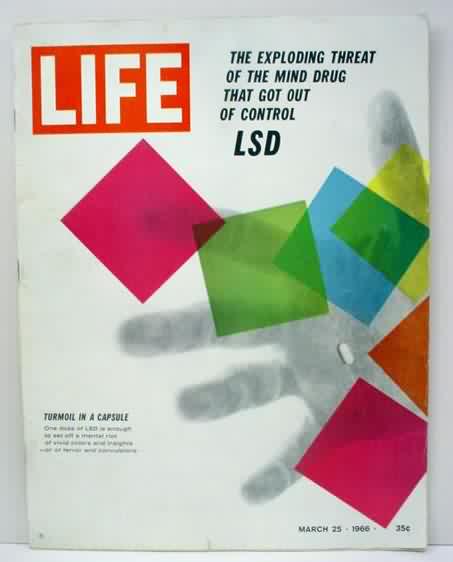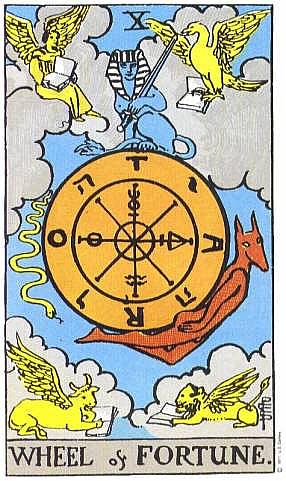“ ‘C’est la vie,’ say the old folks, ‘it goes to show you never can tell.’ ” –Chuck Berry
On January 12, 1967, Jack Webb brought Dragnet blazing back to the small screen in a new incarnation, re-vamped for the times-- Dragnet 1967. The first episode was “The LSD Story,” and it is perhaps the most famous episode of Dragnet ever.
Dragnet 1967, and particularly “The LSD Story,” is part of the media acid panic of the late 1960’s. At once creating fear and mystique, there was much hysterical rhetoric around LSD. Driven into the black market, and thus the mainstream, when it was officially prohibited on the ominous date October 6, 1966, acid was hot on the cultural radar, titillating the teenagers and scaring their parents. The implications of this, and other fascinating acid conspiracies, are well examined in Martin A. Lee and Bruce Shlain’s book Acid Dreams.
“The LSD Story” was directed and written by Jack Webb himself (he was credited as John Randolph), and as in every Dragnet episode he portrayed Sgt. Joe Friday. Among some other pretty wild assertions in “The LSD Story” Joe Friday gives “the ghost, the beast, the chief and the hawk” as “acid freak” parlance for LSD.
 The ghost, the beast, the chief, the hawk.
The ghost, the beast, the chief, the hawk. Those words, all having dark and/or authoritarian connotations, sound a minor key against the subject of LSD. They are a creepy counterpoint to the brightly colored and Baroque language typically associated with the acid experience. Ghost, beast, chief and hawk are effective poetic choices in this way, but they have a meaning beyond their formal aspect.
Those words, all having dark and/or authoritarian connotations, sound a minor key against the subject of LSD. They are a creepy counterpoint to the brightly colored and Baroque language typically associated with the acid experience. Ghost, beast, chief and hawk are effective poetic choices in this way, but they have a meaning beyond their formal aspect.These terms have a corollary in ancient symbology as the angel (ghost), the lion (beast), the bull (chief) and the eagle (hawk). The angel, lion, bull and eagle are mentioned specifically in the Old Testament of the Bible. They are mentioned too in the book of Revelation, and they are associated with the four authors of the Gospels in the New Testament: Matthew-- the angel, Mark-- the lion, Luke-- the bull, John--the eagle.
The angel, lion, bull and eagle appear on the Tarot cards “The World” and “The Wheel”—they surround the world, and the wheel.

 A sphinx, such as the famous one in Giza, appears to be a morphological combination of these symbols.
A sphinx, such as the famous one in Giza, appears to be a morphological combination of these symbols.The symbols are associated with the four elements (angel-water, lion-fire, bull-earth, eagle-air), and analogous to the Zodiac signs Libra, Leo, Taurus and Scorpio.
The angel, lion, bull, and eagle are used to symbolize four extreme personality types in Robert Anton Wilson’s behavior theory described in his book Prometheus Rising.
Basically, these extremely generalized personality types are created by an orientation toward one quadrant of a matrix generated by the programming of the first two neurological circuits of the mind. Circuit One operates bio-survival. An animal advances toward nurturing and safety or retreats from harm (forward and back). Circuit Two controls brain functioning on the inter-personal/political level. An animal enlarges its body to dominate, or shrinks in domination by another (up and down).
 A combination of that up-down, forward-back represent four very basic “directions” for a person to go when they are pulled off center, so to speak. People can be like an angry, domineering and paranoid hawk, a stubborn, truculent bull, an easy going, passive angel, a prideful, generous lion, or some combination thereof.
A combination of that up-down, forward-back represent four very basic “directions” for a person to go when they are pulled off center, so to speak. People can be like an angry, domineering and paranoid hawk, a stubborn, truculent bull, an easy going, passive angel, a prideful, generous lion, or some combination thereof. Again, these symbols encircle a complex subject, they lie outside of the center.
The terms ghost, beast, chief and hawk were chosen by Jack Webb to name LSD.
 Whether he read them somewhere, or he heard them when he infiltrated a gang of “acid freaks,” or he made them up because they sounded good is unknown, and unimportant. In “The LSD Story” they identify LSD, the terms encircle the idea of LSD.
Whether he read them somewhere, or he heard them when he infiltrated a gang of “acid freaks,” or he made them up because they sounded good is unknown, and unimportant. In “The LSD Story” they identify LSD, the terms encircle the idea of LSD.In the past year and a half, I have occasionally made gouache works dealing with the ghost, the beast, the chief and the hawk. Always, I have made them the same way-- with the words in the four corners of radiating squares. It just felt natural to do so, and now I know why.

The Ghost, The Beast, The Chief, The Hawk, Gouache on Paper, 2009
 The work is a mandala. The center from which the colorful squares radiate is blank and roughly the size of a tab of blotter acid. This representation of an acid tab, as an empty center, the silenced ego, describes a condition commonly attributed to an acid trip. The idea of LSD is framed by four terms with ancient symbolic analogs, which name, reduce and generalize their subject.
The work is a mandala. The center from which the colorful squares radiate is blank and roughly the size of a tab of blotter acid. This representation of an acid tab, as an empty center, the silenced ego, describes a condition commonly attributed to an acid trip. The idea of LSD is framed by four terms with ancient symbolic analogs, which name, reduce and generalize their subject. All of these connections and conclusions were drawn only after I was finishing this most recent version of this work. As Joseph Campbell’s work famously points out, ancient symbols pervade even contemporary culture. Evidently they remain potent enough to communicate directly with the subconscious.

Interesting discussion. Well written!
ReplyDeleteOhh! Great post!
ReplyDeleteAwesome post!
ReplyDeleteOutstanding.
ReplyDeleteI always find it interesting how ancient symbolism has a a way of slipping into the collective unconscious and in relation to popular culture
ReplyDelete